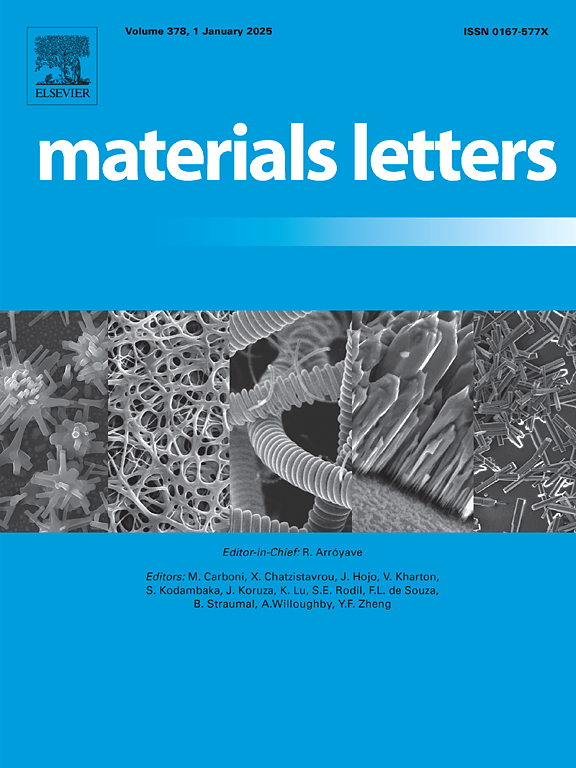Achieving the defect-free window in CZ silicon: A process optimization approach guided by integrated FEM-experiment analysis
IF 2.7
4区 材料科学
Q3 MATERIALS SCIENCE, MULTIDISCIPLINARY
引用次数: 0
Abstract
Defect engineering in large-diameter Czochralski (CZ) silicon growth is paramount and is governed by the ratio of pulling speed to thermal gradient (V/G). While the pulling speed is readily controllable, the radial thermal gradient (G) between the ingot center and surface is notoriously difficult to manipulate during growth. This work establishes an integrated simulation-experiment framework for a 12-in. CZ puller to evaluate the pre-set parameters that dictate G: heater shift, crucible-heater thermal gap, and melt charge. A three-dimensional finite element model (FEM) reveals the crucible-heater thermal gap as the dominant factor governing G variance (standardized effect: −0.85), with heater shift providing secondary tuning. Melt charge exhibits a negligible influence due to compensatory emissivity-depth effects. Optimization focused on thermal gap minimization produced a significant upward shift and radial homogenization of the V/G profile, translating the entire wafer into the defect-free window (0.018–0.022 mm2·min−1·K−1). This was validated experimentally by a drastic suppression of defects, confirming that strategic furnace design is the key to controlling G.
实现CZ硅的无缺陷窗口:一种基于综合有限元-实验分析的工艺优化方法
在大直径奇克拉尔斯基(CZ)硅生长中,缺陷工程是最重要的,它受拉速与热梯度之比(V/G)的控制。虽然拉拔速度很容易控制,但铸锭中心和表面之间的径向热梯度(G)在生长过程中是出了名的难以控制。本工作建立了一个集成的模拟-实验框架。CZ拉器评估预先设定的参数,指示G:加热器换挡,坩埚-加热器热间隙和熔体装药。三维有限元模型(FEM)显示坩埚-加热器热间隙是控制G方差的主要因素(标准化效应:−0.85),加热器位移提供二次调谐。由于补偿发射率-深度效应,熔体电荷的影响可以忽略不计。以热间隙最小化为重点的优化产生了显著的向上移动和V/G分布的径向均匀化,将整个晶圆转化为无缺陷窗口(0.018-0.022 mm2·min−1·K−1)。通过对缺陷的显著抑制实验验证了这一点,证实了炉膛的战略设计是控制G的关键。
本文章由计算机程序翻译,如有差异,请以英文原文为准。
求助全文
约1分钟内获得全文
求助全文
来源期刊

Materials Letters
工程技术-材料科学:综合
CiteScore
5.60
自引率
3.30%
发文量
1948
审稿时长
50 days
期刊介绍:
Materials Letters has an open access mirror journal Materials Letters: X, sharing the same aims and scope, editorial team, submission system and rigorous peer review.
Materials Letters is dedicated to publishing novel, cutting edge reports of broad interest to the materials community. The journal provides a forum for materials scientists and engineers, physicists, and chemists to rapidly communicate on the most important topics in the field of materials.
Contributions include, but are not limited to, a variety of topics such as:
• Materials - Metals and alloys, amorphous solids, ceramics, composites, polymers, semiconductors
• Applications - Structural, opto-electronic, magnetic, medical, MEMS, sensors, smart
• Characterization - Analytical, microscopy, scanning probes, nanoscopic, optical, electrical, magnetic, acoustic, spectroscopic, diffraction
• Novel Materials - Micro and nanostructures (nanowires, nanotubes, nanoparticles), nanocomposites, thin films, superlattices, quantum dots.
• Processing - Crystal growth, thin film processing, sol-gel processing, mechanical processing, assembly, nanocrystalline processing.
• Properties - Mechanical, magnetic, optical, electrical, ferroelectric, thermal, interfacial, transport, thermodynamic
• Synthesis - Quenching, solid state, solidification, solution synthesis, vapor deposition, high pressure, explosive
 求助内容:
求助内容: 应助结果提醒方式:
应助结果提醒方式:


